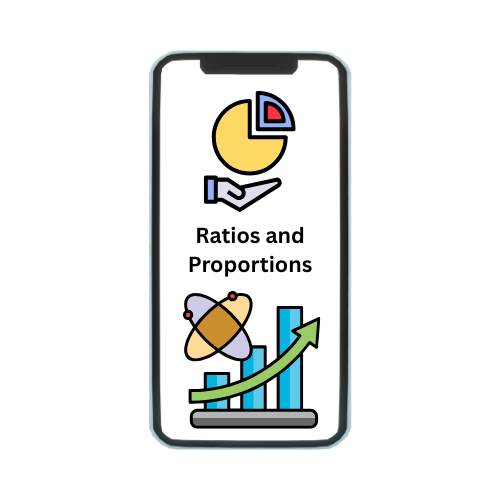What does Cash Flow From Investing Activities Mean?
Cash flow from investing activities is a section of a company’s cash flow statement that reports the cash generated or used from investment-related activities over a specified period. This section provides insights into a company’s investment strategy and its future growth potential.
Here are the main components typically included in cash flow from investing activities:
- Purchases of Property, Plant, and Equipment (PP&E): This represents cash outflows for acquiring long-term assets, such as buildings, machinery, and equipment, which are necessary for the company’s operations.
- Sales of Property, Plant, and Equipment: Cash inflows from selling these long-term assets.
- Purchases of Investments: This includes cash outflows for buying securities or other investments, such as stocks, bonds, or other companies.
- Sales of Investments: Cash inflows from selling securities or other investments.
- Loans Made to Other Entities: Cash outflows for lending money to other entities, which could be another company or an individual.
- Collections on Loans: Cash inflows from the repayment of loans that the company has made to others.
- Acquisitions: Cash outflows related to purchasing another business.
- Disposals: Cash inflows from selling a subsidiary or business segment.
Investing activities typically involve the purchase and sale of long-term assets and other investments not included in cash equivalents. Positive cash flow from investing activities indicates that a company is selling off its long-term investments, while negative cash flow indicates that the company is investing heavily in its long-term growth.
Analyzing cash flow from investing activities helps investors understand how a company allocates its resources towards future growth and expansion. It’s crucial to consider these activities in the context of the company’s overall financial health and strategy.
Why is cash flow from investing activities important?
Cash flow from investing activities is important for several reasons:
- Insight into Capital Expenditures: It provides information on how much a company is spending on capital expenditures (CapEx) such as property, plant, and equipment. High CapEx might indicate that the company is investing heavily in its future operations and growth.
- Assessment of Investment Strategy: This section shows the company’s investment strategies, including acquisitions and divestitures. It helps stakeholders understand how the company is managing its investment portfolio and long-term growth.
- Evaluation of Asset Management: Investors can assess how effectively the company is managing its assets. Frequent purchases and sales of investments or assets can signal active management and potential changes in business strategy.
- Long-Term Viability: By analyzing the investments in new projects or expansion, stakeholders can gauge the company’s potential for long-term growth and sustainability. Continuous investment in new assets might indicate future revenue growth.
- Cash Allocation: It helps in understanding how the company allocates its cash resources. Companies with strong cash flows from operating activities might invest surplus cash in profitable projects, acquisitions, or other long-term assets.
- Impact on Liquidity: Large outflows in investing activities can affect the company’s liquidity. Understanding these outflows helps in assessing the company’s ability to meet short-term obligations and operational needs.
- Predicting Future Performance: Patterns in investing activities can provide clues about future performance. For example, significant investments in new technologies or markets might lead to higher revenues and profits in the future.
- Risk Assessment: It highlights the risk level the company is taking on. High investments in uncertain projects or markets can increase the company’s risk profile.
Different Types of Cash Flow
Cash flow can be categorized into different types based on the activities they are associated with. Here are the primary types of cash flow:
Operating Cash Flow (OCF):
Cash generated or used in the course of a company’s regular business operations.
Components:
- Cash receipts from sales of goods and services.
- Cash payments to suppliers and employees.
- Cash receipts from interest and dividends.
- Cash payments for interest and taxes.
Indicates whether a company can generate sufficient positive cash flow to maintain and grow its operations, pay dividends, and meet its financial obligations.
Investing Cash Flow:
Cash generated or used in activities related to investments in long-term assets and securities.
Components:
- Purchases of property, plant, and equipment (CapEx).
- Sales of property, plant, and equipment.
- Purchases and sales of investments.
- Loans made to or collected from other entities.
Reflects a company’s investment in its future growth and expansion, and helps assess the company’s long-term viability and strategy.
Financing Cash Flow:
Cash generated or used in activities related to financing the business.
Components:
- Issuance of equity or debt.
- Repayment of debt.
- Payment of dividends.
- Repurchase of company stock.
Shows how a company funds its operations and growth through borrowing, equity financing, and return of capital to shareholders.
Free Cash Flow (FCF):
Cash available after accounting for capital expenditures.
Components:
- Operating Cash Flow minus Capital Expenditures.
Indicates how much cash a company can generate after spending the money required to maintain or expand its asset base. It’s crucial for assessing the company’s financial health and its ability to pursue opportunities that enhance shareholder value.
Net Cash Flow:
The total change in a company’s cash position over a period.
Components:
- The sum of Operating, Investing, and Financing Cash Flows.
Provides a comprehensive view of the company’s overall cash position and its ability to increase or decrease cash reserves.
Cash Flow from Operations (CFO):
A more specific version of operating cash flow that focuses on cash generated from core business operations.
Components:
Net income adjusted for non-cash items (e.g., depreciation, changes in working capital).
Helps in understanding the cash-generating efficiency of the company’s core operations without the influence of its capital structure or external investments.
Understanding these different types of cash flow helps stakeholders evaluate a company’s financial performance, liquidity, and long-term sustainability. Each type of cash flow provides different insights into the company’s operations, investment activities, and financing strategies.
Calculating Cash Flow from Investing Activities (With Example & Formula)
Calculating cash flow from investing activities involves summarizing the cash inflows and outflows resulting from a company’s investments in long-term assets and investment securities. This typically includes transactions such as purchasing or selling property, plant, and equipment (PPE), acquiring or selling investments, and making or receiving loans.
Formula
The formula for cash flow from investing activities is:
Cash Flow from Investing Activities=Cash Inflows from Investing Activities−Cash Outflows from Investing Activities
Example
Let’s consider a hypothetical example for a company during a financial year:
Cash Inflows from Investing Activities:
- Sale of old machinery: ₹50,000
- Sale of investments: ₹150,000
Cash Outflows from Investing Activities:
- Purchase of new machinery: ₹100,000
- Purchase of land: ₹200,000
- Loans made to others: ₹50,000
Calculation
First, sum the cash inflows:
Total Cash Inflows
=₹50,000+₹150,000
= ₹200,000
Sum the cash outflows:
Total Cash Outflows
=₹100,000+₹200,000+₹50,000
= ₹350,000
Finally, calculate the cash flow from investing activities: Cash Flow from Investing Activities
=₹200,000−₹350,000
=−₹150,000
Interpretation
The negative cash flow from investing activities of ₹150,000 indicates that the company has invested more in its long-term assets and investments than it has received from selling such assets during the year. This can be a sign that the company is investing in its future growth, but it could also indicate potential cash flow issues if the investments do not generate expected returns.
Interpreting Cash Flow from Investing Activities
Interpreting cash flow from investing activities involves understanding the reasons behind the cash inflows and outflows and what they indicate about the company’s financial health and strategic decisions. Here are key points to consider:
Positive Cash Flow from Investing Activities
A positive cash flow from investing activities occurs when cash inflows from selling assets or investments exceed cash outflows for purchasing new assets or making investments. This could indicate:
- Asset Liquidation: The company might be selling off assets, which could suggest it is restructuring, downsizing, or divesting non-core operations.
- Investment Returns: It could mean the company is realizing gains from its investments, such as selling securities at a profit.
- Reduced Capital Expenditure: Lower investment in new assets might suggest the company is in a mature phase with fewer growth opportunities or is conserving cash due to economic uncertainty.
Negative Cash Flow from Investing Activities
A negative cash flow from investing activities, where outflows exceed inflows, often indicates:
- Capital Expansion: The company is investing heavily in new assets, like property, plant, equipment, or technology, to expand operations, increase production capacity, or improve efficiency.
- Strategic Investments: Large outflows might also reflect strategic investments in acquisitions, joint ventures, or new projects expected to generate future returns.
- Growth Initiatives: Investing in R&D or new market entry can also result in negative cash flow from investing activities, indicating a focus on long-term growth.
Strategies to Improve Cash Flow from Investing Activities
Improving cash flow from investing activities involves optimizing both cash inflows and outflows related to investments and long-term assets. Here are some strategies to consider:
1. Optimize Asset Utilization
- Sell Non-Core Assets: Identify and sell underutilized or non-core assets to generate cash inflows.
- Lease Instead of Buy: Consider leasing equipment or property instead of purchasing, which can reduce large capital outflows.
2. Improve Investment Returns
- Evaluate Investments: Regularly review and assess the performance of investments. Divest from underperforming investments and reinvest in higher-yield opportunities.
- Diversify Portfolio: Diversify investments to balance risk and improve overall returns.
3. Manage Capital Expenditures
- Prioritize Investments: Focus on investments with the highest potential return or strategic importance. Delay or phase out less critical expenditures.
- Cost-Benefit Analysis: Perform thorough cost-benefit analyses before making significant capital expenditures to ensure they provide a good return on investment.
4. Enhance Cash Inflows
- Strategic Disposals: Sell high-value assets at the right time to maximize returns. This includes timing the market and selling when asset values are high.
- Sale-Leaseback Arrangements: Engage in sale-leaseback transactions for major assets like real estate. This provides immediate cash inflows while allowing continued use of the asset.
5. Improve Financial Management
- Negotiate Better Terms: Negotiate better terms with suppliers and financial institutions to improve payment schedules or reduce interest rates.
- Efficient Working Capital Management: Improve the efficiency of working capital management to free up cash for investing activities.
6. Leverage External Financing
- Obtain External Funding: Secure external funding, such as loans or equity financing, specifically for significant investments, thereby spreading out large cash outflows over time.
- Grants and Subsidies: Explore government grants or subsidies for specific projects or investments, which can reduce the net cash outflow.
7. Enhance Operational Efficiency
- Automate Processes: Invest in technology and automation to reduce operational costs, thereby freeing up more cash for investing activities.
- Energy Efficiency: Invest in energy-efficient equipment and practices to reduce long-term operational costs.
8. Implement a Strong Investment Policy
- Establish Guidelines: Develop and adhere to a strong investment policy that outlines criteria for investment decisions, risk tolerance, and expected returns.
- Regular Monitoring: Continuously monitor investment performance and adjust strategies as necessary.
Practical Example: Implementing Strategies
Company XYZ
Current Situation:
- Company XYZ has negative cash flow from investing activities due to heavy investments in new machinery and a new office building.
- The company has several underutilized assets and underperforming investments.
Strategies Implemented:
- Asset Optimization:
- Sold underutilized equipment for ₹200,000.
- Engaged in a sale-leaseback transaction for the office building, generating ₹1,000,000 in immediate cash inflow while continuing to use the building under a lease agreement.
- Investment Review:
- Divested from underperforming investments worth ₹500,000 and reinvested in high-yield bonds expected to generate better returns.
- Capital Expenditure Management:
- Postponed the purchase of non-essential machinery, saving ₹300,000.
- Performed a cost-benefit analysis for a new production line, ensuring an expected ROI of 15% before proceeding with the investment.
- External Financing:
- Secured a low-interest loan of ₹500,000 to fund a critical expansion project, spreading the cash
By implementing these strategies, Company XYZ improved its cash flow from investing activities, turning a potential negative cash flow into a positive one. The immediate inflows from asset sales and sale-leaseback transactions provided the liquidity needed for critical investments, while strategic divestments and financing reduced the pressure on cash reserves.
Conclusion
Improving cash flow from investing activities requires a strategic approach, focusing on optimizing asset utilization, improving investment returns, managing capital expenditures, and leveraging external financing. Regular review and monitoring of investments, coupled with a strong investment policy, can ensure sustainable and positive cash flows from investing activities.





